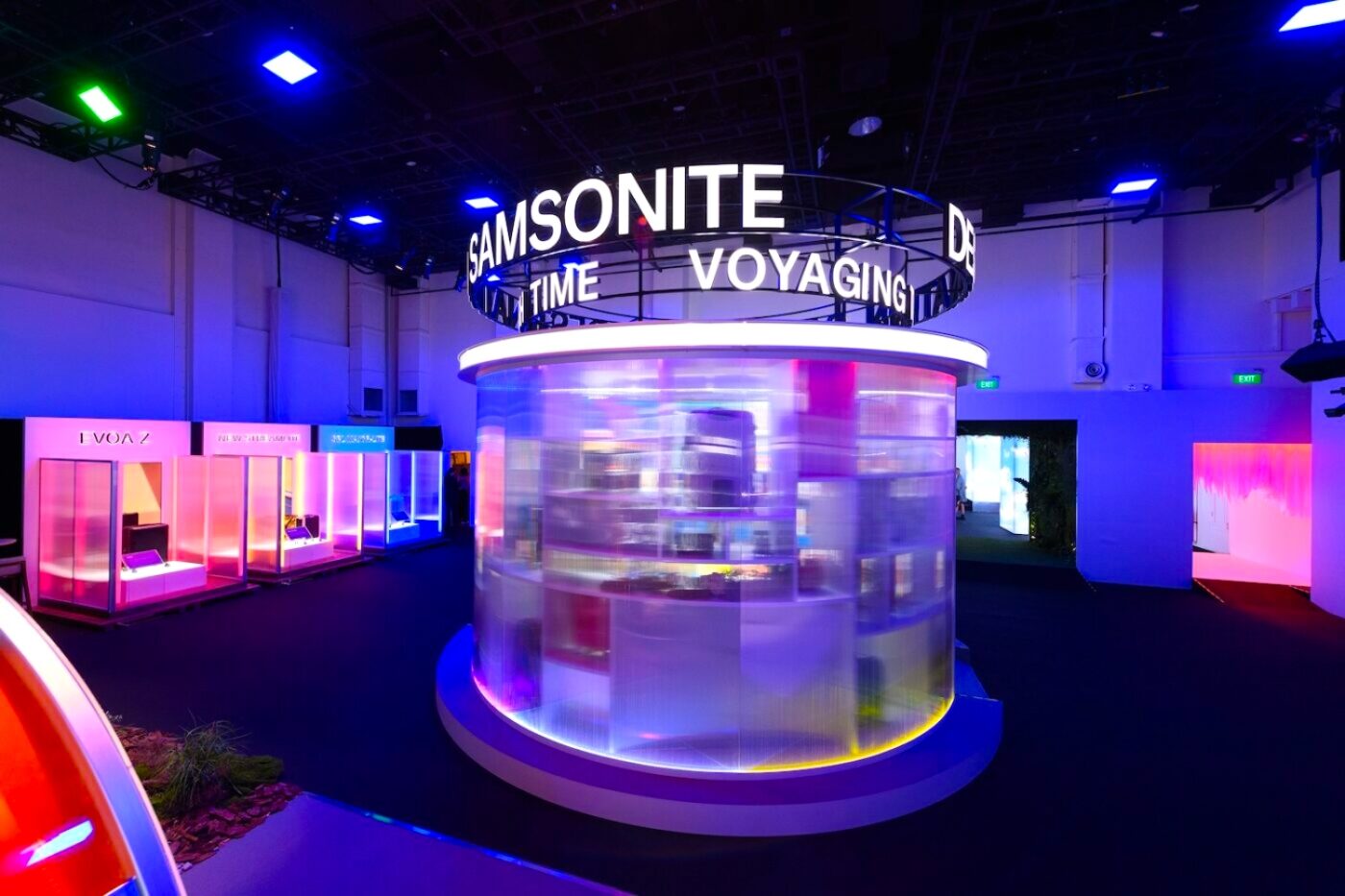Earlier this month, I was invited by legendary luggage brand Samsonite to come and explore the wonderful city of Singapore and voyage through their one-of-a-kind immersive experience ‘The Journey’. Offering a unique insight into the brand’s long, illustrious history, I was lucky enough to also interview one of Samsonite’s most innovative young designers who also gave me a glimpse into their very exciting future…
A Journey Through Time
Taking place at the iconic 72-13 Singapore — a rice warehouse turned gallery, cinema, and theatre space — Event Journey was a carefully curated look at Samsonite’s long heritage of innovation, sculpted around the three modes of travel: land, sea and air.
While for much of the press pack in attendance, the main attraction seemed to be some of the hugely impressive local ambassadors that Samsonite invited along — including Hong Kong singer and actor Jeffery Ngai, model and social media sensation Kiwi Lee Han, and South Korean actor Lee Dong Wook — I took the flurry activity erupting around these famous faces as a welcome diversion, freeing up some space around Samsonite’s installations…
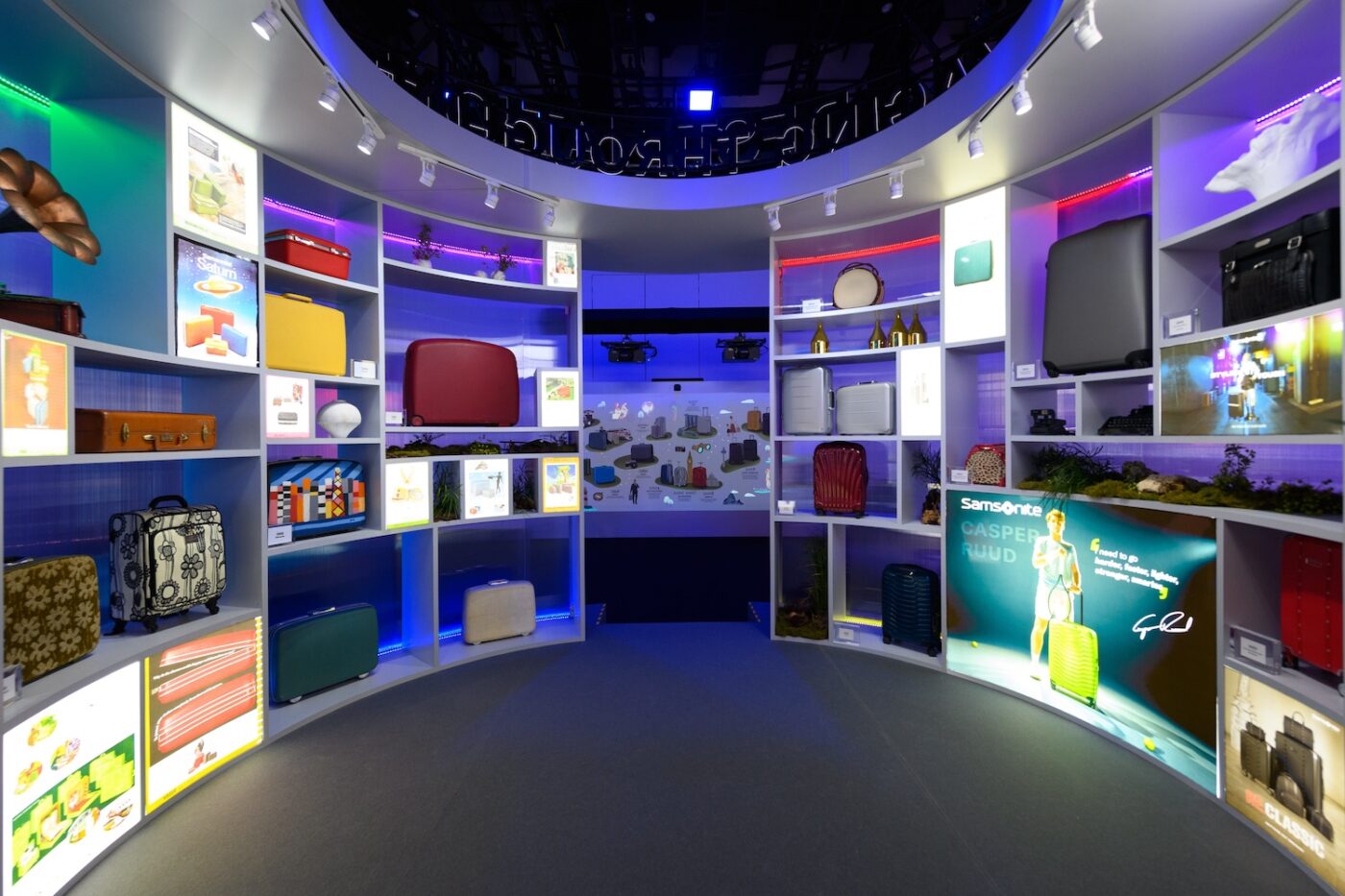
Perhaps the most fascinating of these was a large exhibition in the round, showcasing some of Samsonite’s most iconic products and marketing materials from its 113-year history…
Spanning all the way from their very first wooden trunks to their groundbreaking collaboration with high-fashion legend Alexander McQueen — resulting in a limited edition case moulded from McQueen’s very own ribcage in a fittingly gothic blend of the two brand’s long traditions — travelling via their introduction of the first hardshell cases and, likely of particular interest to regular DMARGE readers, the appearance of Samsonite’s Xylem Scion case in 2002’s Die Another Day.
Tumble Time
While this may have been an unparalleled chance for a history buff such as myself to delve into Samsonite’s past, a number of more hands-on experiences dotted around the space gave more telling clues as to its present ways of working and exciting plans for the future.
Chief among these was what appeared to be a human-sized hamster wheel standing proudly against the back wall of the space, a Samsonite case ominously sitting inside and a wholly inviting handle attached to the front of the contraption beckoning spectators closer… myself very much included.
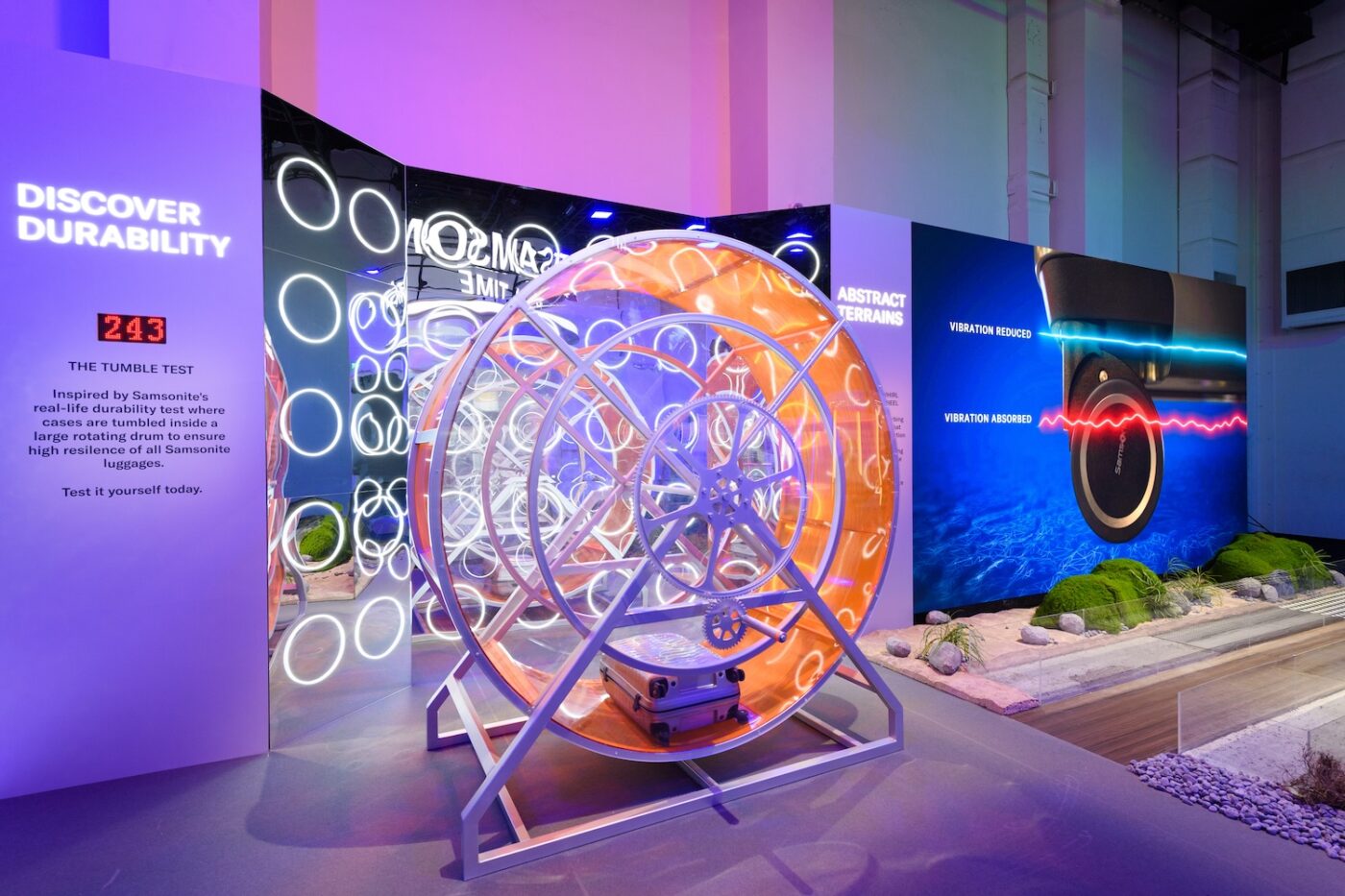
As it turned out, this was just one of many infamous tests through which Samsonite put all of its prototype products in order to ensure they meet the brand’s high standards for quality and durability. This device, ‘The Tumble Test’, is designed to simulate the brutality that we’ve all come to expect our cases to endure, especially on long-haul commercial airliners and in the dark, impenetrable labyrinths behind airport baggage carousels.
With each case having to ensure scores of tumbles before proceeding to production, this is only one of a raft of tests that Samsonite’s team were thrilled to share with me…
Some involve plunging the cases into terrifyingly low temperatures to ensure they’re ready for truly worldwide travel, while another sees them endure intense pressure, testing whether they’re truly able to keep your personal possessions safe. A famous spin-off of this test was recently featured in one of the brand’s many PR campaigns, and showed their cases having a piano dropped on them from above.. and surviving unscathed every single time.
Sustainable Suitcases
The other major theme running through the Journey was sustainability, a watchword of the travel industry and, increasingly, the wider world. Given that large proportions of all suitcase brands’ wares are made of plastic, you might imagine them to be more guilty than many of causing unintended environmental damage.
Samsonite is acutely aware of this dynamic and to demonstrate their belief in adapting to a sustainable future as quickly as possible were keen to show off some of the hugely impressive work they’ve done around diverting plastics from a sad and detrimental fate in landfills. Take a look at the below installation for a flavour of what I’m talking about…
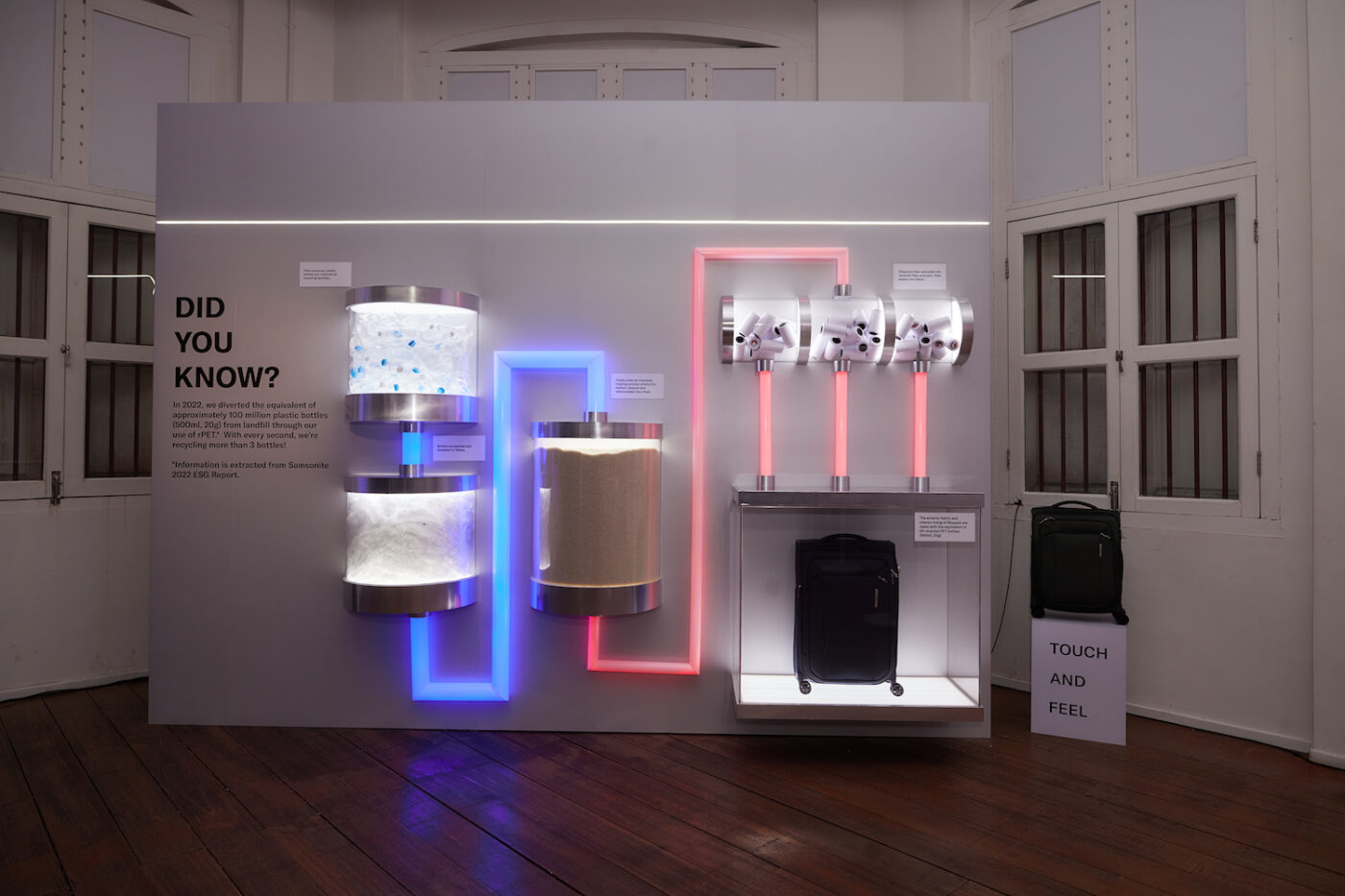
In 2022, Samsonite has saved over 100 million such bottles from being abandoned in such sights to slowly — if ever — decompose over thousands of years, damaging the earth and providing no substantial benefit to its inhabitants either. Helpfully, it also provides me with a seamless segue into talking about the brand’s visionary plans for the future, which I was able to discuss with one very special employee…
Flying Suitcases: A Conversation With Samsonite’s Designers
Not only has Henry Seungyun Yang recently been promoted to one of the most coveted design roles in Samsonite’s expansive global team — Head Of Design for Samsonite Asia — but he also happened to be one of the most humble, hardworking, and devoted people I’ve ever had the pleasure of interviewing.
The Early Days
Though busy touring the aforementioned celebs around the Journey, I managed to catch him between rounds for a quick chat about his pivotal role in shaping Samsonite’s future. As with any creative, I first wanted to understand how he first recognised his artistic aspirations and subsequently found his way into such a prestigious creative role. Like so many, it all started with one simple childhood obsession…
“I just used to draw, when I was young… but back then, I didn’t know that was my talent, right?”
Henry Seungyun Yang
Originally from South Korea, he then gave an insight into the stereotypical pressures felt by those growing up there and how his parents were, thankfully, immune to such pressure…
“When you grow up in Korea, there’s a lot of pressure that you have to be successful… So a lot of parents actually pushed [their children into certain respected professions but] my parents didn’t really care, which was really great because, when I decided to go to art school, they just said ‘go ahead'”.
Henry Seungyun Yang
After art school, Henry was quickly snapped up by a Chinese consumer electronics manufacturer where he designed “phones, cameras, conference systems” and a whole host of sleek, tech-led gadgets. This would become integral to his later work because, after a quick pit stop in bathroom and home design gave him the soft touch and aesthetic-led flare that the electronics industry might have lacked, he found himself at Samsonite, which he considers to be a perfect blend of everything that came before:
“I feel quite lucky that I came here because it’s right between fashion and electronic… I used to I used to collect sneakers and there are elements I can use on luggage.”
Henry Seungyun Yang
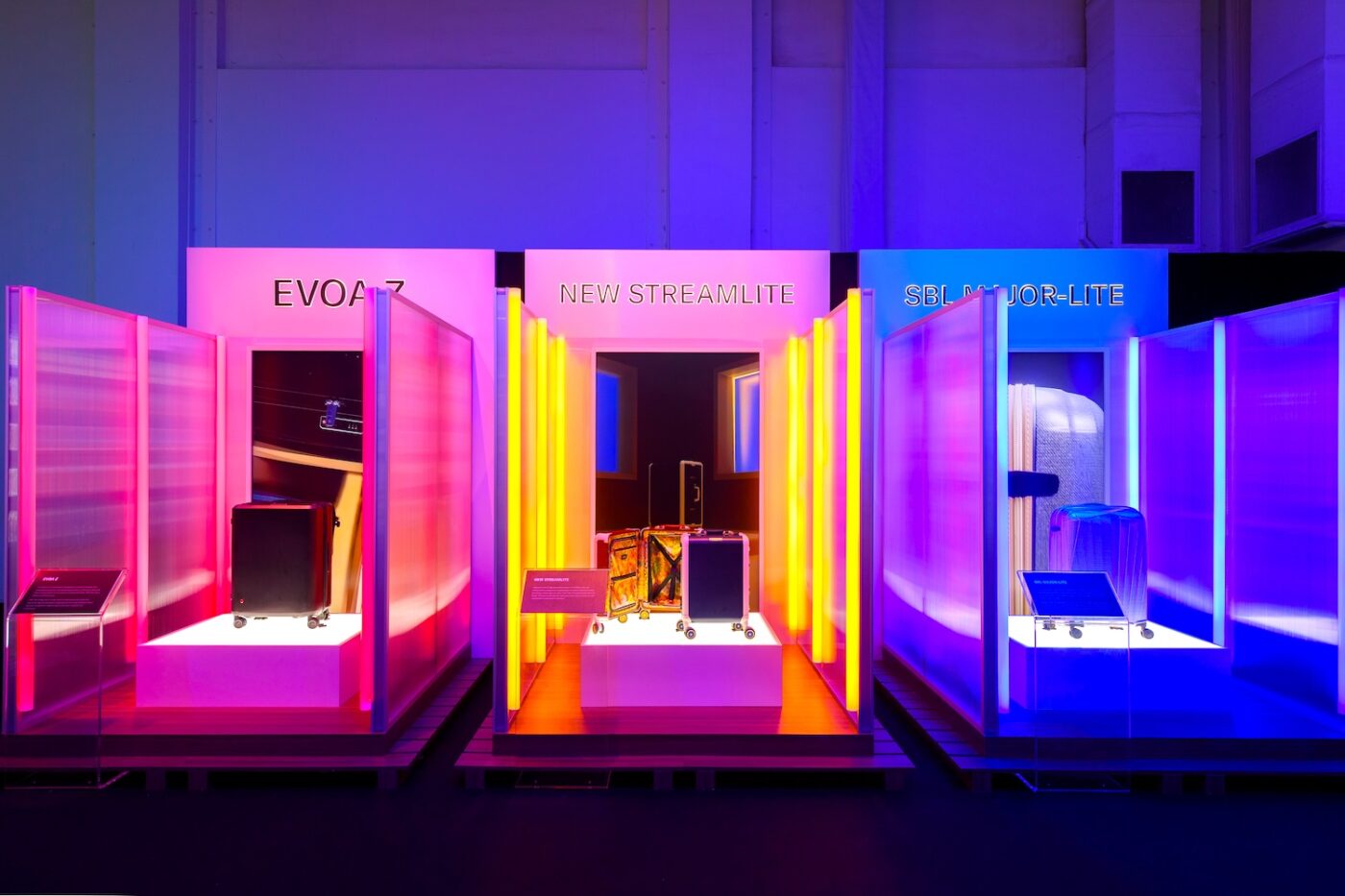
The Design Process
Once I understood how he’d arrived here, I wanted to understand how Henry approached Samsonite’s design process and, in particular, what he considered to be his proudest achievement since taking up his new role.
Like the rest of the Samsonite team, after a question posed about the careful balance of appealing design and a utilitarian approach to ensuring their suitcases are fit for purpose, Henry was keen to reference their uniquely brutal testing process before giving an often-overlooked nod to the gentle tug-of-war that takes place between flight-of-fancy designers and their far more grounded product teams…
“The standard of the testing makes it really challenging to reach those peaks of aesthetic design… so we have to find a way to bring the two concerns together. We have a strong product development team as well as a great marketing team who always have different but equally important views… its about sharing ideas and making soemthing happen. For every project, you have to think both together.”
Henry Seungyun Yang
Henry took this question very seriously, rightly wanting to present the whole Samsonite team as a seamlessly harmonious mass of cutting-edge design and commercially savvy brilliance. However, it was when I asked him about his favourite product in Samsonite’s new range that his eyes really lit up, gesturing at once to the Evoa Z, a beautiful product to debut in Samsonite’s upcoming collection…
In particular, he is obsessed with the gracefully bevelled edge that the brand has managed to engineer along its upper and lower edges, Not only does this help protect the bag’s corners from enduring undue bumps and scrapes, but it also allows for a delicately inlaid bit of Samsonite branding that can be viewed far more easily by passers-by than that set on a totally vertical surface.
In doing so, it unites Henry’s twin concern for aesthetics and pragmatics, as well as lighting a fire in his belly too…
“It has all our DNA, that simplistic look with the accent on the corner… I think it’s done really, really well. It took us a long time to figure it out… and then eventually we solved it through sharing and collaboration… I’m really proud this happened.”
Henry Seungyun Yang
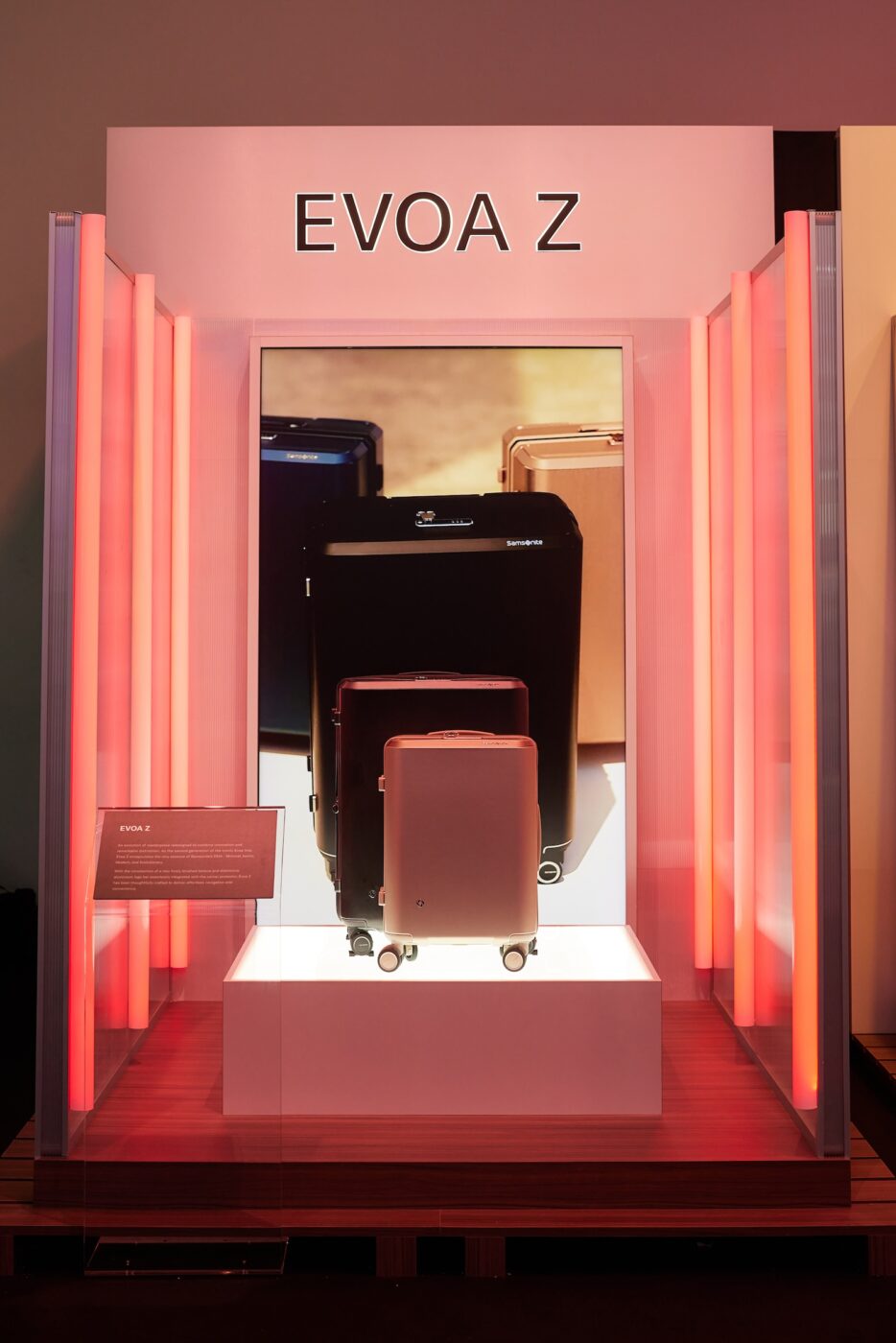
The Future Of Luxury Luggage
And yet, it was Samsonite’s future that took Henry’s contagious enthusiasm to the next level. When I asked him about the future trends he expects to see emerging in the industry, his answer centred around two themes that are coming to the fore in life far beyond the travel sector…
“Customisation is coming.”
Henry Seungyun Yang
Customisation and personalisation are creeping into every aspect of our lives — from news and social media feeds to fashion — allowing consumers to tailor-make their possessions, transforming them from mass goods into one-of-a-kind, exclusive pieces. A station offering personalized, embossed luggage tags which I was fortunate enough to take advantage of is one such way this has been part of the luggage industry for a long time, but there’s a lot more on the horizon.
The other theme was the T-word:
“Tech, tech, tech. Right now, tech in this space hasn’t quite found its place, but in 5 or 10 years it will be the major theme. Battery power, for example, will become crucial. People need power to charge goods and, in some instances, even to transform their bags into ride-on scooters. But how we roll out that tech in a safe, cost-effective way remains to be seen.”
Henry Seungyun Yang
For my final question, I wanted to indulge Henry’s evidently ample imagination: If costs and technological limits were not a concern, what would the perfect suitcase look like? Taking inspiration from one of his favourite anime characters, his answer was wonderfully off-the-wall… or should I say “off the ground”?
“The suitcase could fly. Rather than pulling it behind you, it would just float. No effort or strength is needed. You go to check in your bag and it just drifts away, floating seamlessly towards the plane. Imagine how much easier that would be; no wheels getting stuck, no rough ground causing you to slow down. Imagine…”
Henry Seungyun Yang
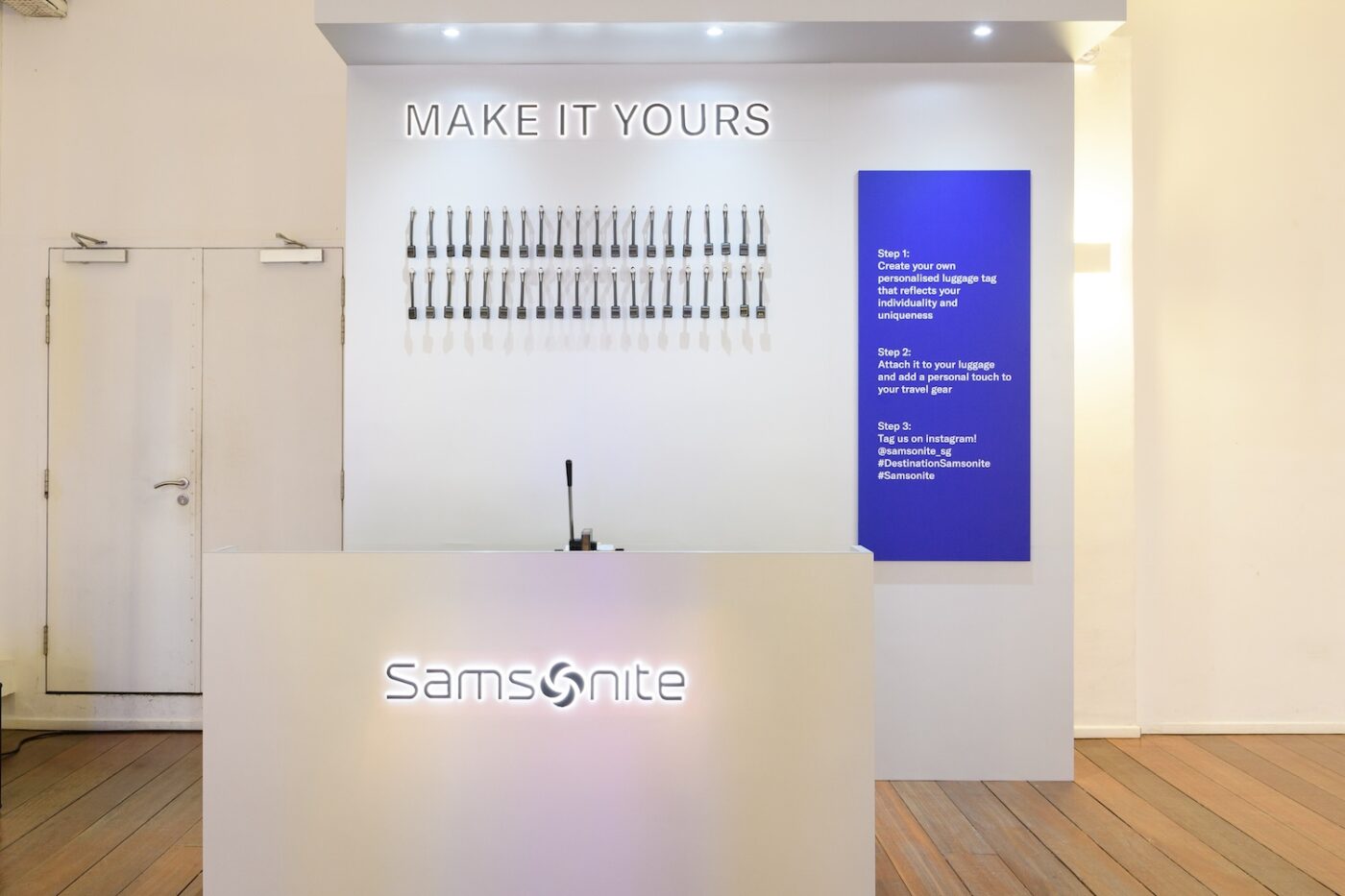
Final Thoughts
Flying suitcases may seem a little far-fetched, but you have to remember how once-wild ideas have now become the norm…
For example, if you’d said to a Victorian ancestor that one day he’d be able to carry every book ever written in his pocket on a device the size of a playing card… and instead of absorbing worldly knowledge he’d probably use it to play Angry Birds, he’d likely have laughed you all out the room. And yet, the smartphone is alive and well.
So I advise any sceptics to watch this space carefully: Samsonite has been at the forefront of the vast majority of seismic leap forwards in the luggage industry and, with people like Henry at the helm, I don’t see that changing anytime soon…
